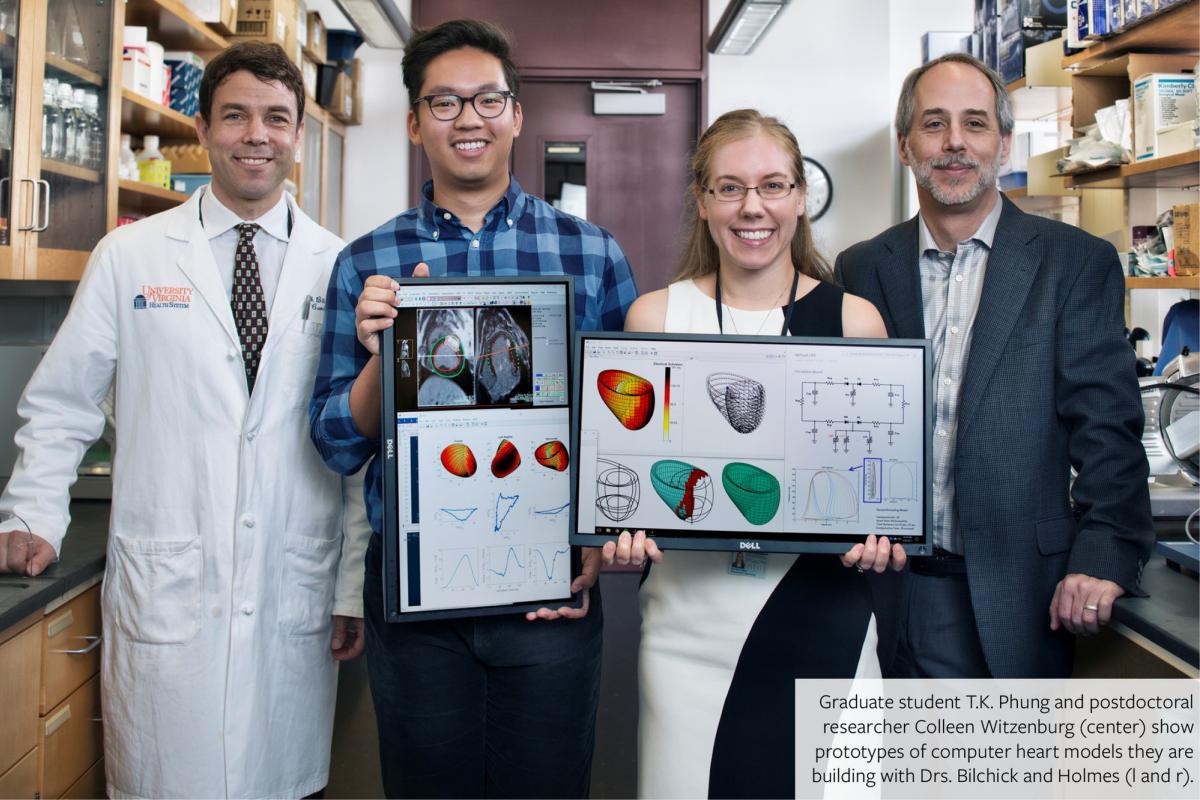Charting the Rhythm of a Beating Heart
Most of us take the beating of our hearts for granted. For many heart failure patients, however, those beats are not so reliable. In some, different portions of the heart contract at different times, wasting energy and resulting in poor pumping of the blood and overall weakness. A specialized treatment, called cardiac resynchronization therapy (CRT), implants a pacing device to restore proper heart contractions. But there’s a catch: some patients require customized placement of the CRT stimulation wires or personalization of pacemaker settings—and the possible permutations are vast.
That’s the challenge facing Kenneth Bilchick, MD, from cardiology and Jeff Holmes, MD, PhD, from biomedical engineering. Together, these researchers envision a Virtual CRT computer program that will allow physicians to screen and identify the best stimulation locations and patterns for any individual patient, prior to implanting the device. The best part? The Virtual CRT software will run in five minutes or less on a desktop PC. When used as part of routine pre-implantation planning, the Virtual CRT will enable physicians to place and program stimulation that is specifically customized to each individual patient.
This work has recently received significant support from a private family foundation interested in UVA research.
“This could be a game-changer for many of the five million patients in the U.S. suffering with heart failure,” says Bilchick. “CRT can stop and even reverse the progression of heart failure, reducing the size of the heart while dramatically improving heart function, exercise capacity, and quality of life.”
Bilchick, Holmes, and their UVA colleagues are uniquely qualified to advance this work. Bilchick is a national leader in using MRI to improve patient selection for CRT and directs UVA’s Program for Advanced Imaging in Cardiovascular Electrophysiology and Heart Failure. Holmes is a leading expert in computational modeling of the Center for Engineering in Medicine, which fosters collaborations between engineers and physicians. The pair is supported by the Cardiovascular Imaging Center and a leading heart MRI group at UVA. They are also working with an innovative vest device that is worn by a patient to aid in mapping patterns of electrical activation in the heart. Funding for the device came from the same private foundation.
“The early stages of this project are only possible with private funding,” says Holmes, “since we are upending the current paradigm for building and using heart models. Most heart models are impractical for routine clinical use because they require days or weeks to customize and run. Our current prototypes can already simulate three months of heart remodeling in just a few minutes. Our goal is to identify the minimum number of factors that must be tailored to an individual patient to correctly predict CRT response, then determine the best practical approach to achieving that response.”

